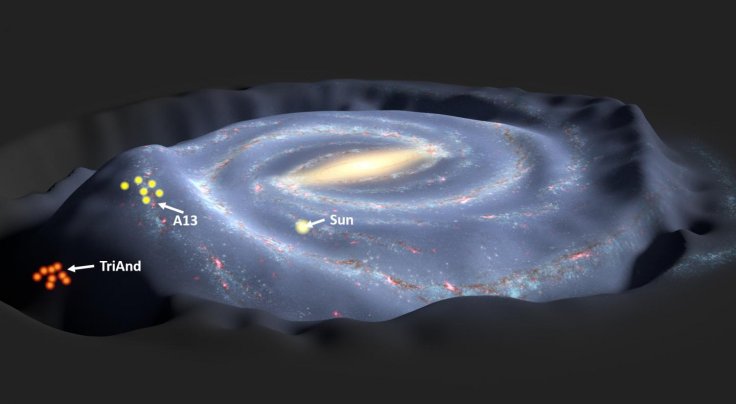
Some Milky Way Galaxy stars are evicted by invading dwarf galaxies, reveals study
A new study revealed that a group of stars of our own Milky Way Galaxy was formed inside the galaxy itself and were not alien invaders. According to the study, a particular group of stars present at the Milky Way Galaxy’s outer halo actually began their life within the galaxy’s central disk. That means they did not come from other galaxies. Like our Sun, a majority of the stars of the Milky Way Galaxy are present at the galaxy’s central disk and a smaller portion of stars are spread throughout the galaxy’s halo. These stars are not scattered randomly but are present in groups as stellar structures.
Scientists believe that some of these stellar structures are not originated from the Milky Way Galaxy, rather, they are the remnants of smaller galaxies that have crashed with and were engulfed by the Milky Way. But the latest study confirms that there is a star group situated in our galaxy’s halo which is originated from the Milky Way itself. As per the scientists, these stars got kicked out from the Galaxy’s central disk after a dwarf galaxy invaded our Milky Way Galaxy.
Co-author Judy Cohen, professor at the California Institute of Technology (Caltech) said that these stellar structures hosting the halo stars were pushed off the plane of the Milky Way when a massive dwarf galaxy passed through the galactic disk. According to Cohen, this type of galactic passage causes oscillations, or waves, that eject stars from the disk, either above or below it depending on the direction in which the perturbing mass is moving. Cohen calls this phenomenon as galactic eviction.
For the study, the scientists looked at 14 stars located within two stellar structures and analyzed their properties. The names of those two stellar structures are Triangulum-Andromeda (Tri-And) and the A13 stellar overdensities. These two stellar structures lie on opposite sides of the Milky Way’s flat central disc and orbit around the center of the galaxy.
The scientists analyzed the chemical composition of those two stellar structures with the help of spectral instruments Keck and Very Large Telescopes. The results revealed that the halo stars from Triangulum-Andromeda and the A13 stellar overdensities are related to the parent populations from the thin inner disk of the Milky Way Galaxy.


